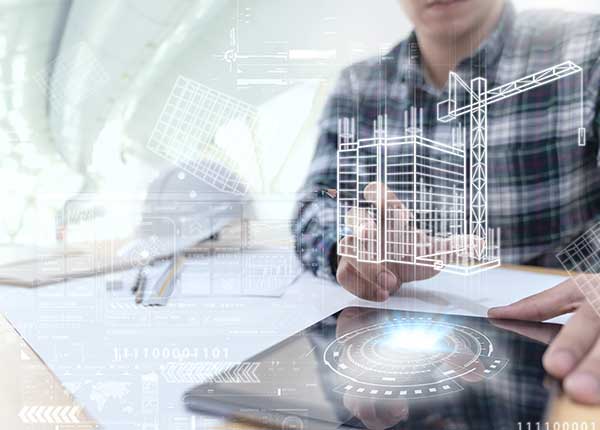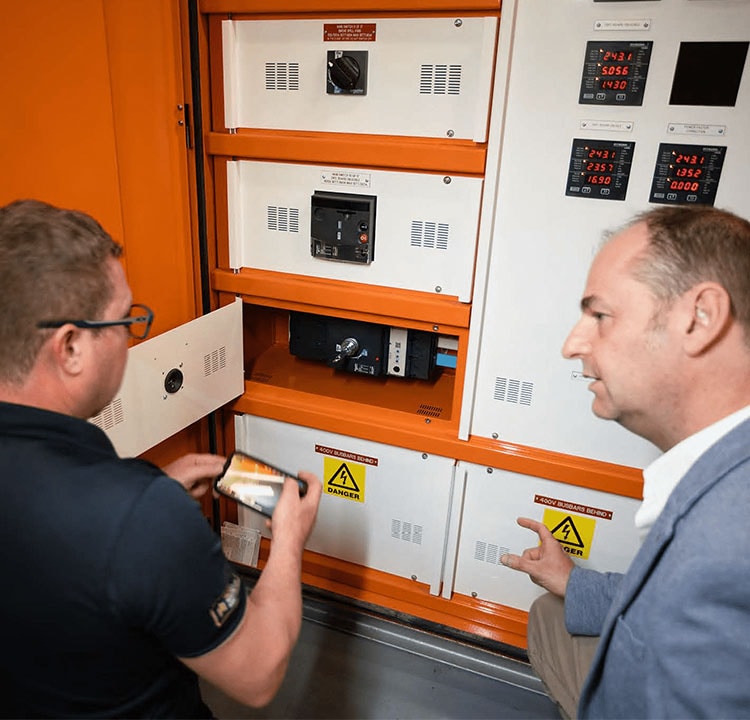Revolutionising Building Management with the Digital Twin Technology
In today's rapidly evolving technological landscape, advanced concepts have emerged as a game-changer with immense potential in various industries. Among these cutting-edge solutions, one groundbreaking innovation has garnered significant attention and practical application in the engineering and architectural field: the digital twin technology.
The digital twin technology is a concept that involves creating a virtual replica, or "twin," of a physical building or asset. This digital replica not only simulates the behaviour of the physical entity but also allows for real-time data analysis and command operations. This technology is now emerging as a powerful tool for revolutionising building management.
Unlocking Building Management Efficiency and Sustainability
The digital twin technology is revolutionising the field of building management by unlocking new levels of efficiency and sustainability. By creating a digital replica of a particular machine, building, or construction project, digital twin technology provides a complete and accurate virtual representation. This allows for real-time access to system data, enabling functions such as adaptive energy management and predictive maintenance. In the construction and real estate industries, the digital twin technology is gaining significant ground due to its ability to optimise building operations and enhance overall performance.

Unveiling the Triple Power of Digital Twin Technology

With its ability to monitor, analyse, control, and optimise a system throughout its entire lifecycle, digital twin technology is unveiling a triple power in the field of building management. This power lies in three key areas:
- Digital Model Twin: The Physical Model in the Digital Realm
A true digital twin goes beyond a simple model and includes a specific instance that reflects the characteristics of its physical counterpart in real-time. By creating a digital model twin of a building or construction project by software such as Revit, AutoCAD, or BIM, stakeholders can have a complete and accurate virtual representation of the physical asset. This twin provides intricate details about every asset within the structure – dimensions, attributes, and its precise integration into the building's framework. It's like having a detailed map of the building's DNA, helping architects and engineers make informed decisions.
- Digital Asset Twin: The Operation and Maintenance Maestro
Implementing a digital asset twin allows for the comprehensive understanding, prediction, and optimisation of each individual asset within a building or construction project offsite. This allows for real-time monitoring of performance, maintenance needs, and energy consumption with minimal physical intervention. By having remote access to system data, building managers can make data-driven decisions to optimise budgets, reduce operational costs, and prolong the lifespan of assets. This level of granularity enables effective asset management, including maintenance scheduling, performance monitoring, and lifecycle optimisation. - Functional or Operational Twin: The Future of Adaptive Energy Management
With the integration of digital twin technology, building management can embrace a proactive and adaptive approach to energy management. By harnessing the power of data analytics and artificial intelligence, this functional or operational twin can identify patterns and trends to simulate various scenarios and test different strategies to optimise energy consumption, improve performance, and reduce carbon emissions. Additionally, the real-time data collected by the digital twin allows for continuous monitoring of energy usage and can identify areas for improvement or potential efficiency gains.
Synergy: The Power of Integration
The true power of digital twin technology lies in its ability to integrate these three key areas, creating a synergistic effect that revolutionises building management. This integration allows for a holistic approach to building management, where stakeholders can access real-time data, make informed decisions, and continuously monitor functionality. By utilising the digital twin technology, building managers can streamline processes and enhance efficiencies, resulting in cost savings and improved operational performance.
With analytics and artificial intelligence seamlessly merging with building controls, this synchronises with the asset management system to boost asset performance and overall efficiency. This synergy provides not just improved performance for individual assets, but a ripple effect that enhances interconnected assets within a building.

Green Footprint: Sustainability at its Finest

In addition to improved functionality and operational efficiency, the integration of digital twin technology in building management also contributes to sustainability efforts. By leveraging the digital twin's capabilities, building managers can gain valuable insights into energy consumption patterns, identify areas of waste or inefficiency, and implement targeted strategies for energy organisation. With reduced technician visits, fuel costs dwindle, travel time shrinks, and carbon emissions plummet, resulting in a smaller carbon footprint and a more environmentally friendly building operation. This focus on sustainable practices not only benefits the environment but also helps companies reduce their carbon footprint and meet regulatory requirements.
The Future Beckons: Integration Today, Transformation Tomorrow
As the world becomes increasingly interconnected and technology continues to advance, the applications of digital twin technology in building management are only expected to grow. Future advancements could include integrating digital twin technology with smart grids and renewable energy sources, allowing for more efficient energy generation and distribution within buildings. Furthermore, the ability of digital twins to simulate different operating scenarios can support the design and implementation of innovative solutions that optimise resource usage, enhance occupant comfort and well-being, and contribute to the development of sustainable and resilient buildings.
By revolutionising building management through digital twin technology, companies can unlock untapped potential for improved operational performance, reduced energy consumption, and enhanced sustainability. So, whether you're an architect, a facility manager, or simply an enthusiast of innovative possibilities, maximise the potential of digital twin technology in building management and embrace the opportunities it offers for a more efficient, sustainable, and interconnected future.
Contact us today to learn how our company can help you harness the power of digital twin technology.

